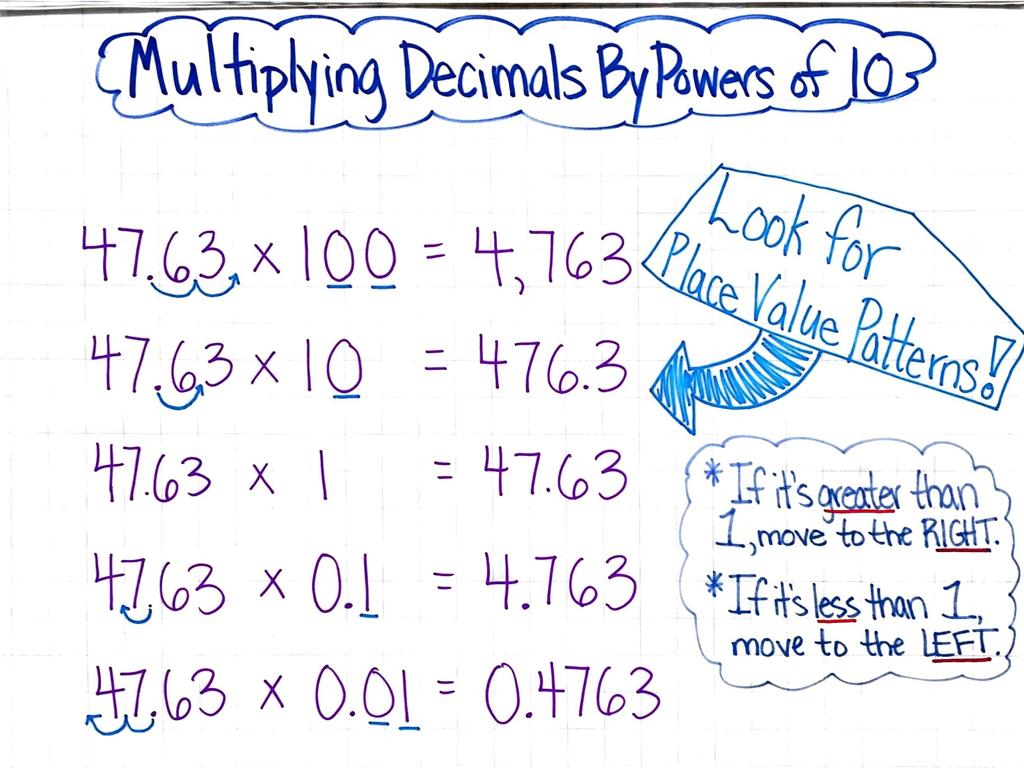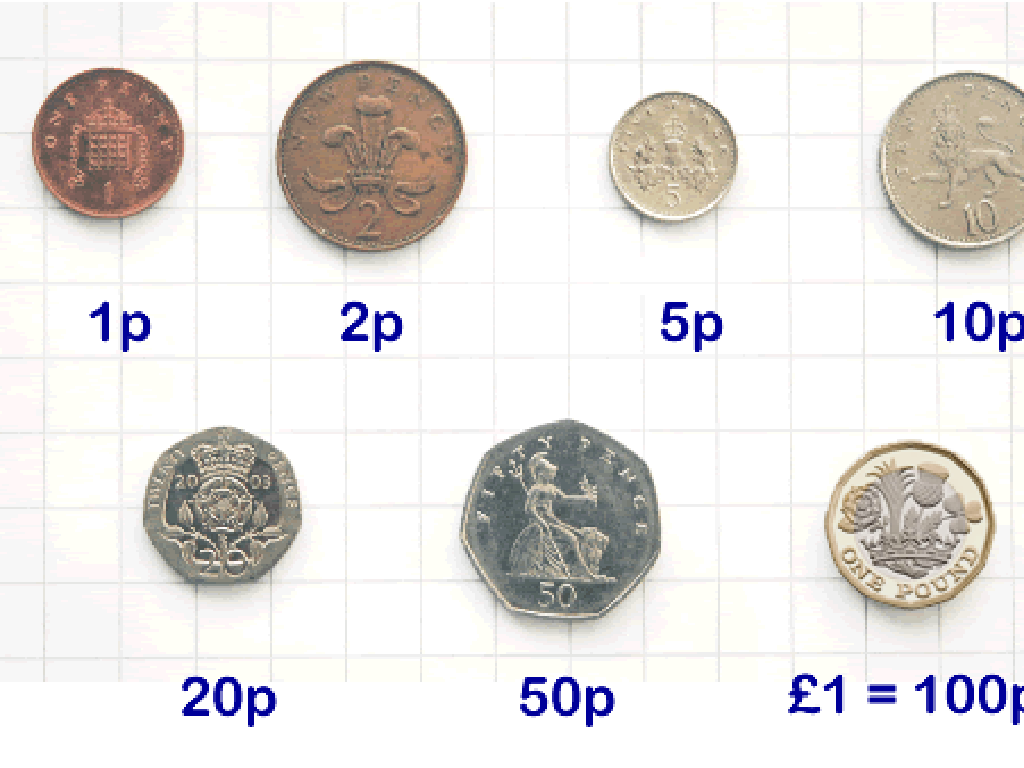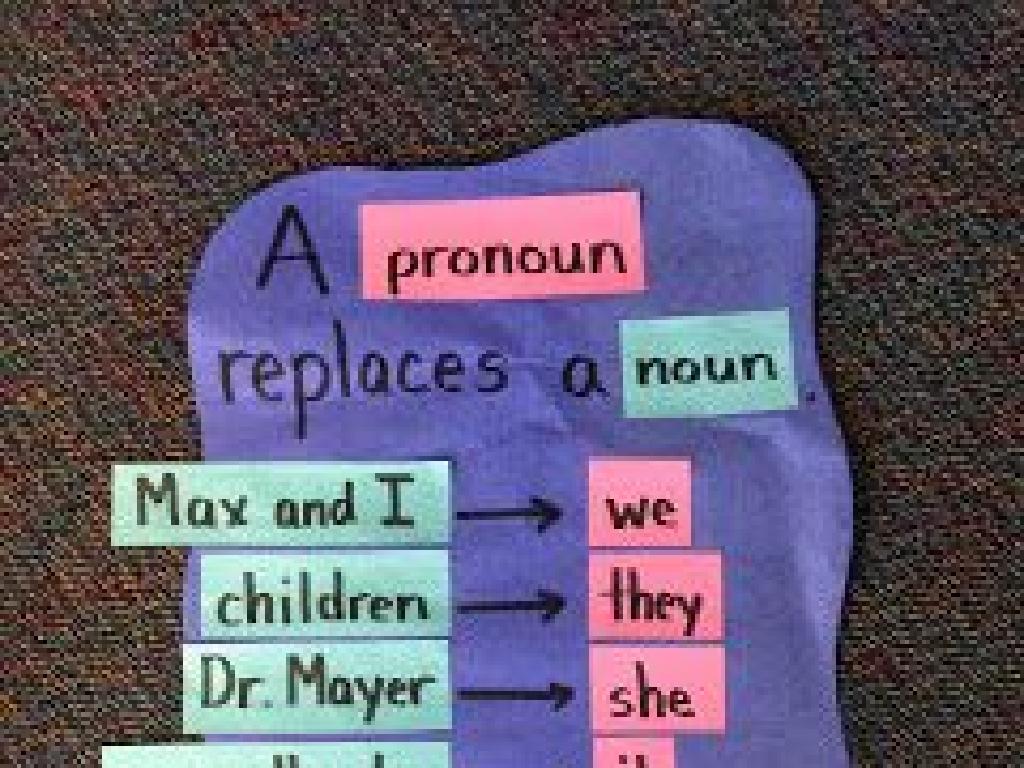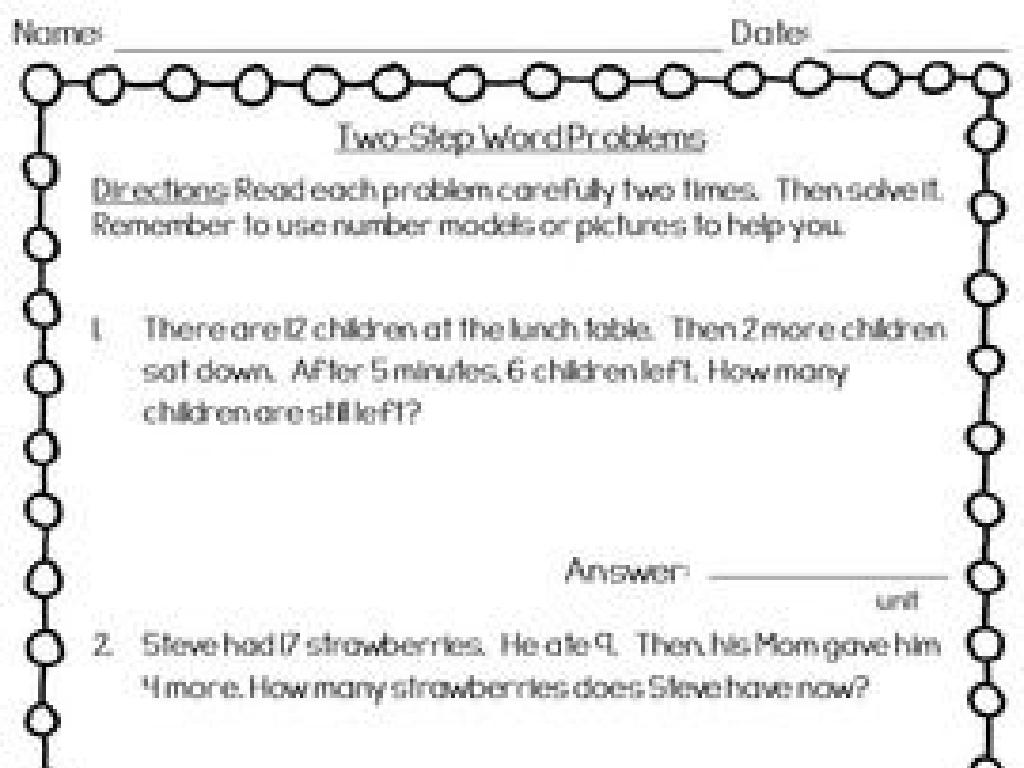Choose Metric Units Of Volume
Subject: Science
Grade: Fifth grade
Topic: Units And Measurement
Please LOG IN to download the presentation. Access is available to registered users only.
View More Content
Exploring Units of Volume
– Why measurement matters
– Types of measurements
– Length, Mass, and Volume are key types of measurements
– Today’s focus: Volume
– Volume measures how much space an object takes up
– Metric units for volume
– Liters (L) and milliliters (mL) are common metric volume units
|
This slide introduces the concept of measurement and its significance in science and everyday life. Emphasize the importance of measuring accurately for experiments, cooking, and more. Discuss the three main types of measurements students are familiar with: Length, Mass, and Volume. Highlight that today’s lesson will focus on Volume, which is the amount of space an object occupies. Introduce the metric units of volume, liters and milliliters, and explain that these are part of the International System of Units (SI), commonly used in science. Provide examples of when to use each unit, such as using milliliters for a medicine dose and liters for measuring a bottle of soda.
Understanding Volume in Metric Units
– Volume: space an object occupies
– Common metric units: liters, milliliters
– Use liters for larger amounts, milliliters for smaller
– Cubic centimeters (cc) explained
– 1 cc equals 1 milliliter of water
– Real-life examples of volume
– Measuring water in a bottle, medicine in a syringe
|
Volume is a fundamental concept in science, representing the three-dimensional space occupied by a substance or object. Introduce the metric units of volume, emphasizing liters and milliliters for liquid volumes, and cubic centimeters for solids. Explain that 1 cubic centimeter is equivalent to 1 milliliter, which is a key concept for understanding the relationship between units. Provide relatable examples such as the volume of water in a bottle or the amount of medicine in a syringe to illustrate the practical application of measuring volume. Encourage students to think of other examples where they encounter volume measurements in their daily lives.
Metric Units of Volume
– Understanding the metric system
– A system used globally for measurement
– Liters: Base unit of volume
– Used to measure larger volumes of liquid
– Milliliters: A smaller unit
– Used for smaller volumes; 1,000mL in 1L
– Relationship between liters and mL
– 1 liter equals 1,000 milliliters
|
This slide introduces students to the metric system, specifically focusing on units of volume. The metric system is a decimal-based system of measurement used around the world. Liters are the base unit for measuring volume, typically used for larger quantities of liquid. Milliliters are a smaller unit of volume, with 1,000 milliliters making up 1 liter. Understanding the relationship between liters and milliliters is crucial for students as they encounter and use these measurements in real-life situations, such as cooking, science experiments, and more. Encourage students to think of examples where they might use liters or milliliters and to practice converting between the two.
Choosing the Right Metric Unit for Volume
– When to use liters (L)
– Use liters for larger volumes like a bottle of soda
– When to use milliliters (mL)
– Use milliliters for small volumes like a medicine dropper
– Examples of liters vs. milliliters
– A water bottle might be 500 mL, but a swimming pool is measured in liters
– Understanding 1 L = 1000 mL
– Converting between liters and milliliters is easy; just multiply or divide by 1000
|
This slide aims to help students understand when to use liters and milliliters, the two common metric units for measuring volume. Liters are suitable for larger quantities of liquid, such as beverages or fuel, while milliliters are used for smaller amounts, like in cooking recipes or medicine. Provide examples of everyday items and their typical volumes to illustrate the appropriate unit to use. Explain that 1 liter is equal to 1000 milliliters, which is a key conversion factor in the metric system. Encourage students to practice by measuring different liquids at home or in the classroom and converting between the two units.
Reading Volume Measurements
– Reading measurements on containers
– Learn to read the scale on various containers like beakers and bottles.
– Practice with a graduated cylinder
– Fill a cylinder with water, note where the water level lines up with the markings.
– Tips for accurate measurement
– Always check the measurement at eye level, and make sure the container is on a flat surface.
|
This slide aims to teach students how to properly read volume measurements on different laboratory containers. Emphasize the importance of understanding the scale and units marked on the container. When using a graduated cylinder, demonstrate how to fill it with a liquid and accurately read the level against the marked gradations. Stress the importance of taking measurements at eye level to avoid parallax errors and ensuring the container is on a flat surface for accuracy. Provide students with graduated cylinders and various liquids to practice this skill. Discuss common mistakes and how to avoid them, reinforcing best practices for precise measurements.
Estimating Volume: A Practical Approach
– Estimate liquid volumes
– Look at different containers and guess how much liquid they can hold
– Activity: Guess and measure volume
– Choose items like a water bottle, a cup, and a spoon. Write your guesses, then use a measuring cup to check
– Why estimation is useful
– Estimation helps us make quick decisions without exact measurements
– Relate to everyday situations
– Think about cooking or choosing the right size drink at a restaurant
|
This slide introduces the concept of volume estimation, a valuable skill in science and everyday life. Start by discussing how to visually gauge the volume of liquids in various containers. The class activity involves students guessing the volume of common items, such as a water bottle or a spoon, and then using a measuring cup to determine the actual volume. This hands-on experience reinforces the importance of estimation. Explain that estimation allows us to make informed guesses when precise measurements aren’t necessary, such as when cooking or selecting drink sizes. Encourage students to share their own examples of when they’ve had to estimate volume in their daily lives.
Class Activity: Measuring Volume
– Measure water volume in containers
– Record and compare estimates vs actual
– Note your guess and then use a graduated cylinder to measure.
– Discuss findings in groups
– Share your results with your classmates.
– Understand discrepancies
– Why were some estimates off? Discuss!
|
This hands-on activity is designed to help students understand the concept of volume and practice measuring it using metric units. Provide a variety of containers and graduated cylinders for students to measure the volume of water. Encourage them to estimate the volume before measuring to compare their guesses with the actual measurements. After the activity, facilitate a group discussion where students can share their findings and explore reasons for any discrepancies between their estimates and the actual volumes. Possible reasons could include the shape of the container, human error in estimating, or misunderstanding the units of measurement. This will help them grasp the importance of accuracy in scientific measurements.
Conclusion: Metric Units of Volume
– Recap: Metric volume units
– Importance of volume knowledge
– Understanding volume helps in science experiments and cooking recipes.
– Everyday examples of volume use
– Measuring liquids for drinks, filling a pool, or using a recipe.
– Next lesson: Unit conversion
– We’ll learn to switch between liters, milliliters, and other units.
|
As we wrap up today’s lesson, remind the students of the key metric units of volume, such as liters and milliliters, and their significance. Emphasize how understanding volume is crucial not just in scientific experiments but also in daily tasks like cooking or measuring the right amount of liquid for a recipe. Provide relatable examples that they might encounter at home. Looking ahead, prepare the students for the next lesson where they will learn to convert between different units of volume, an essential skill for both science and everyday life. Encourage them to think of situations where they might need to use this skill and to come prepared with questions.






